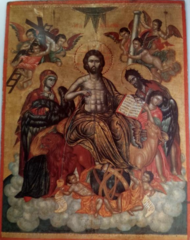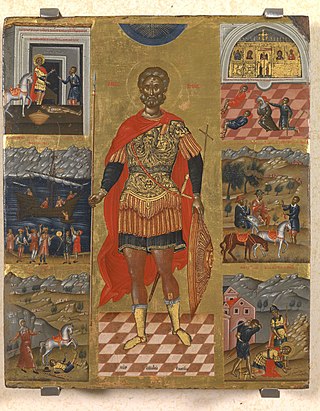
Cretan School describes an important school of icon painting, under the umbrella of post-Byzantine art, which flourished while Crete was under Venetian rule during the Late Middle Ages, reaching its climax after the Fall of Constantinople, becoming the central force in Greek painting during the 15th, 16th and 17th centuries. The Cretan artists developed a particular style of painting under the influence of both Eastern and Western artistic traditions and movements; the most famous product of the school, El Greco, was the most successful of the many artists who tried to build a career in Western Europe, and also the one who left the Byzantine style farthest behind him in his later career.

The Heptanese School of painting succeeded the Cretan School as the leading school of Greek post-Byzantine painting after Crete fell to the Ottomans in 1669. Like the Cretan school, it combined Byzantine traditions with an increasing Western European artistic influence and also saw the first significant depiction of secular subjects. The school was based in the Ionian Islands, which were not part of Ottoman Greece, from the middle of the 17th century until the middle of the 19th century. The center of Greek art migrated urgently to the Ionian islands but countless Greek artists were influenced by the school including the ones living throughout the Greek communities in the Ottoman Empire and elsewhere in the world.
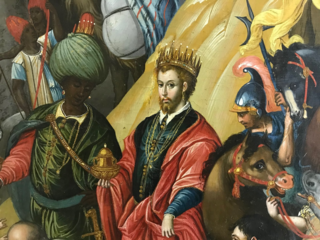
Michael Damaskenos or Michail Damaskenos was a leading post-Byzantine Cretan painter. He is a major representative of the Cretan School of painting that flourished in the 16th and 17th centuries. Painters Georgios Klontzas and Damaskenos were major contributors to the Cretan School during the same period. Damaskinos traveled all over the Venetian Empire painting. He remained loyal to his Greek roots stylistically but incorporated some Italian elements in his work. He was strongly influenced by the Venetian school. He painted parts of the Cathedral of San Giorgio dei Greci. Damaskenos has 100 known works. He influenced the works of Theodore Poulakis.

Theodore Poulakis was a Greek Renaissance painter and teacher. He is considered the father of the Heptanese School and one of the most prolific painters of Venetian Crete. Poulakis was a member of the Cretan School, his contemporary was Emmanuel Tzanes. Emmanuel Tzanes and Poulakis were active painters of the Cretan School until Candia, went to war with the Ottomans around 1649. Candia finally fell after twenty years of siege in 1669. Poulakis settled on the island of Corfu. Stephanos Tzangarolas was another famous painter in Corfu around the same period. Poulakis's works are likened to Andreas Pavias and Georgios Klontzas. Poulakis works exhibit qualities of the Venetian school. Over 130 of his paintings have survived and can be found all over the world.

Frantzeskos or Franghias Kavertzas was a Greek painter. His painting style resembles the late Cretan School or early Greek Baroque period. His work was influenced by Georgios Klontzas, Michael Damaskinos and Emmanuel Tzanfournaris. He was active in Crete during the early part of the 17th century roughly after the death of Georgios Klontzas. He painted two icons that are very similar to Klontzas's most notable pieces. Theodore Poulakis also painted similar themes. Kavertzas artwork incorporates the Venetian school. His works influenced Leos Moskos. His most notable works are the Last Judgement, In You Rejoiceth.
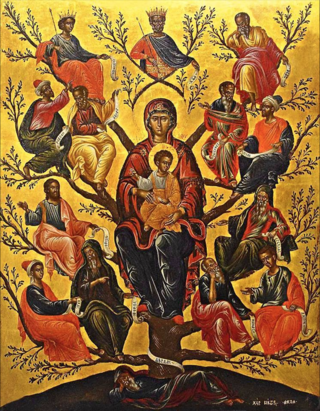
Victor was a painter active during the 17th century. He represented the late Cretan school. He was influenced by Michael Damaskinos. He kept his style simple and followed the lines of the improved maniera greca which was heavily influenced by the Venetian school. One of his main influences was Michael Damaskinos. He was active when four different artists used the name Victor. He has a huge catalog of work attributed to him. According to the Neo-Hellenic Institute, ninety-five of his paintings and one fresco survived. He was an extremely popular Greek icon painter.

Ιoannis Apakas, also known as Johann Apakass was a Greek painter and priest. He was active in the latter part of the 16th century to the early 17th century. He was popular artist during his time.
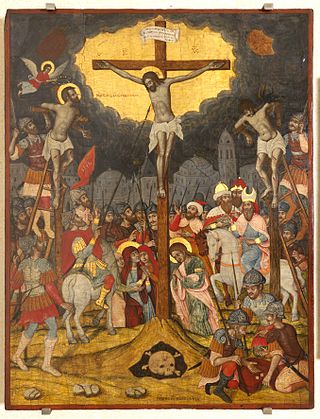
Ioannis Moskos was a Greek painter that migrated to Venice. Two other very famous painters with the name Moskos were active around the same period Elias Moskos and Leos Moskos. Leos Moskos frequently traveled all over the Venitian Empire and was in Venice around the same period as Ioannis. He is not Elias Moskos's son. The Moskos painters may have had some relationship but documentation is unavailable. Ioannis painted in the traditional maniera greca and the Venetian style. His art resembles Michael Damaskinos and Andreas Pavias. He was affiliated with the church of San Giorgio dei Greci. He left a huge assortment of paintings that can be found all over the world. His most popular work is The Crucifixion.

Stephanos Tzangarolas also known as Stephano Tzangarola. He was a Greek painter during the late Cretan Renaissance. He migrated from Crete to the island of Corfu. He is a member of the Heptanese School and the Cretan Renaissance. His contemporaries at the time were Panagiotis Doxaras, Theodore Poulakis and Elias Moskos. His artwork began to reflect the transition of the classical maniera greca of Crete to the more refined style of the Ionian Islands. His style resembles the transition of Gentile da Fabriano and Fra Angelico from the maniera greca to their respective styles. Tzangarolas paintings influenced countless artists both Italian and Greek. Some artists that reflect his style include Spyridon Sperantzas and Georgios Kastrofylakas. His paintings can be found all over Greece mainly Athens and the Ionian Islands. Some of his work is in Cairo and London. His student was famous Greek painter Andreas Karantinos.
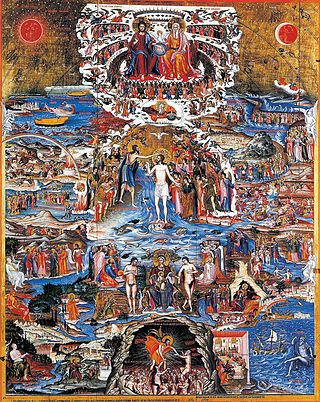
Ioannis Kornaros was a Greek painter. He was one of the few painters from Crete during the 19th century. He does not belong to the Cretan Renaissance but was influenced by the art. He is considered to be one of the foremost icon painters of the Greek Neoclassical era and Modern Greek Enlightenment in art also known as Neo Hellenikos Diafotismos. He implemented a unique style. He was influenced by Michael Damaskinos, Georgios Klontzas, Victor and other Cretan artists. He influenced Modern Greek art. He is one few Greek painters affiliated with Cyprus. Others included Ioannis Kyprios and Theodore Apsevdis. His teacher was Georgios Kastrofylakas. His most famous painting Great Art Thou resembles Georgios Klontzas's In Thee Rejoiceth.

Emmanuel Skordilis, also known as Emmanouil Skordilis. He was a Greek Renaissance painter. He was active in Crete around the time Emmanuel Tzanes, Elias Moskos, and Philotheos Skoufos were painting in Crete. He belongs to the elite group of Greek painters that followed the Venetian influenced maniera greca in Crete. Sixty eight of his works survived. He is one of few artists to not travel to the Ionian Islands and participate in the Heptanese School. He eventually settled in the Cyclades on the inland of Milos. Christodoulos Kalergis is another prominent Greek artist associated with the Cyclades, he was from Mykonos. Skordilis was influenced by Georgios Klontzas, Michael Damaskinos and Angelos. Skordilis brought the artistic style of Crete to the Cyclades and influenced countless artists in that region.

Andreas Karantinos, also known as Andreas Karandinos. He was Greek Renaissance painter, educator and goldsmith. He was from Kefalonia. He was a member of the Heptanese School. His artwork is reflective of the time period. His teacher was famous painter Stephanos Tzangarolas. He adapted his style. Karandinos also emulated the Cretan masters such as Michael Damaskinos. Many Greek painters emulated one other. Karandinos also taught famous Greek painter Konstantinos Kokkinos and several others. Many of his works are in Greece mostly on the island of Kefalonia. Twenty two of his work survived and one fresco. The fresco is of the Second Coming or the Last Judgement. The fresco is located in the church of Evagelastria in Kastro Kefalonia.

Nicholas Ritzos also known as Rizo and Ricio). He was a Greek Renaissance painter. His father was famous painter Andreas Ritzos. His brother was painter Thomas Ritzos. His son was painter Manea Ritzos. Nicholas and his father Andreas Ritzos are the forefathers of the Cretan School of painting. They influenced countless artists both Greek and Italian. There painting style was the typical Venetian influenced maniera greca in Crete. The island transitioned from the classical Byzantine painting to a more refined style. His contemporaries were Andreas Pavias, Nikolaos Tzafouris, and Angelos Akotantos. They influenced painters such as Michael Damaskinos, Petros Lambardos, and Emmanuel Lambardos. Nine of his works have survived.
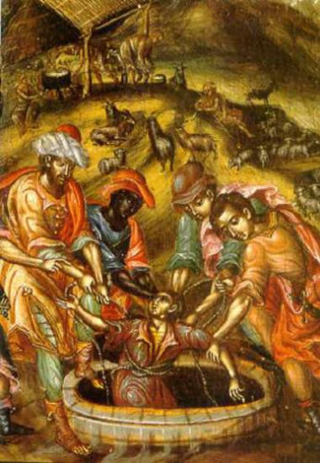
Neilos, also known as Neilos Kokolitza was a Greek painter, monk, and archbishop. He was the Archbishop of Kea and Thira. He was a prominent member of the Cretan School. His contemporaries at the time were Ieremias Palladas, and Theocharis Silvestros. He influenced the works of countless Greek and Italian artists. He is one of few Greek painters who had a high rank within the church. Another hi ranking Greek painter was Archpresbyter Andreas Karantinos. Several of his works have survived and they can be found in the museum of Gonia Monastery. His most popular work is The Story of Joseph.

Konstantinos Kontarinis, also known as Konstantino Kontarini, was a Greek Baroque painter of the Heptanese School. He was heavily influenced by the works of Theodore Poulakis. His contemporaries at the time were Stephano Tzangarola and Panagiotis Doxaras. His work signals a transition for the Cretan School to the more refined Heptanese School. Kontarinis clearly follows the traditional maniera greca. The art was heavily influenced by the Venetian style. He influenced the works of countless Greek and Italian painters namely Spyridon Sperantzas and Nikolaos Kallergis. According to the Institute of Neohellenic Research, eighty-five of his works survived. His most notable work is the portable icon consisting of Scenes from Genesis. It is featured at the Byzantine Museum Athens, Greece.

Giovanni Kyprios, also known as Zuane Ciprioto and Ioannis Kyprios. He was a Greek painter from Cyprus living in Venice. Other Greek painters living in Venice around the same period were Thomas Bathas and Emmanuel Tzanfournaris. Kyprios was active during the second part of the 16th century. He was associated with famous painter Tintoretto. Kyprios painted in the traditional Byzantine style. He mixed the traditional Byzantine style with Venetian painting. His work was also influenced by the Cretan artists namely Michael Damaskinos. According to the Institute of Neohellenic Research, eight paintings are attributed to Kyprios. His most notable work is the Dome at San Giorgio dei Greci.

The Stoning of Saint Stephen is an egg tempera and gold leaf painting created by Greek master Michael Damaskinos. He was a member of the Cretan school. He integrated Venetian painting with the Greek mannerisms prevalent at the time. Damaskinos was active in Heraklion, Sicily, Venice, and other parts of Italy. The Stoning of Stephen has been depicted by countless Greek and Italian painters. Saint Stephen was a protomartyr. He was the first martyr of Christianity. He was stoned to death for following the new faith. The painting is a depiction of that event.

The Vision of Constantine was an egg tempera painting created by Elias Moskos. Moskos was active during the 17th century. Fifty-two paintings are attributed to the artist. He was active on the Greek islands of Crete and Zakynthos. He is one of the few artists that belongs to the Cretan school and the Heptanese School. Constantine is one of the most important figures in the Christian religion. He was the first Roman emperor to accept the new faith. He has been depicted in art since the inception of the new religion. He is often depicted with his mother Helen. The Vision of Constantine was very popular in Greek and Italian art.

The Holy Towel is a tempera painting completed in 1659 by Emmanuel Tzanes. He was a representative of the Late Cretan School and the Heptanese School. His brothers were the painter and poet Marinos Tzanes and the painter Konstantinos Tzanes. One hundred thirty works of art are attributed to Emmanuel. He is one of the most important Greek painters of the 17th century along with Theodoros Poulakis. He was from Rethymno Crete. He was active from 1625 to 1690. He was the priest of San Giorgio dei Greci in Venice for thirty years.

The Holy Trinity is a tempera painting created by Spyridon Romas. He was a Greek painter from Corfu. He was a prominent member of the Heptanese School. He was active from 1745 to 1786. He traveled all over the world. He painted in Corfu, Lecce, Livorno, and London. According to the Hellenic Institute over 25 of his works survived. He is one of the few Greek painters to completely adopt a new style of painting. He traveled to London, England around 1770 and remained in the country until his death. He painted several portraits but also maintained artwork in the region. An iconostasis with most of his works is superlatively preserved in Livorno, Italy at the Museo della Città di Livorno.


